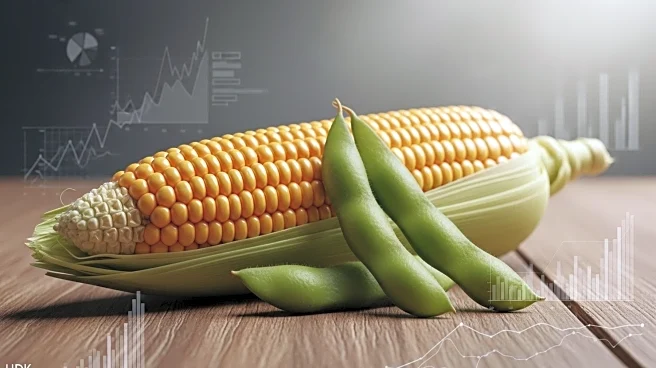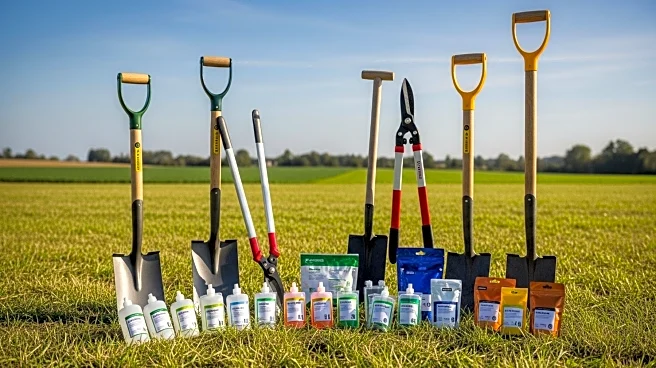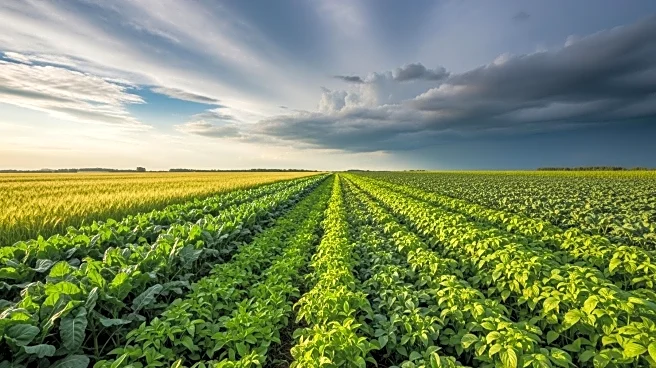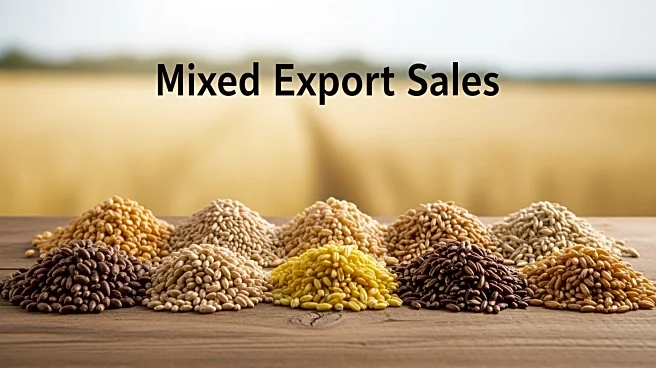What's Happening?
The upcoming September USDA World Agricultural Supply and Demand Estimates (WASDE) report is set to provide crucial insights into the U.S. corn, soybean, and wheat markets. The report, scheduled for release on September 12, will incorporate objective survey data from the National Agricultural Statistics Service, focusing on plant population and ears per acre for corn in major producing states. Recent weather conditions, including disease pressure and dryness, are expected to influence yield estimates, with historical data suggesting a potential downward adjustment of 2 bushels per acre for corn and 1 bushel per acre for soybeans. Despite firm export sales and inspections, the pace of soybean export commitments lags behind historical averages, potentially affecting demand forecasts. The report is anticipated to show steady or slightly lower ending stocks for these crops, reflecting adjustments in production and consumption patterns.
Why It's Important?
The September WASDE report holds significant implications for U.S. agricultural markets, particularly in terms of price volatility and supply chain dynamics. Lower yield estimates for corn and soybeans could impact market prices, influencing decisions for farmers and traders. The report's findings may affect export strategies, especially given the current lag in soybean export commitments. Additionally, the report's insights into wheat market stability could provide guidance for stakeholders navigating international trade tensions and domestic consumption shifts. The anticipated adjustments in production and ending stocks are crucial for understanding the broader economic landscape, affecting commodity trading and agricultural policy decisions.
What's Next?
Following the release of the September WASDE report, stakeholders in the agricultural sector will likely reassess their strategies based on the updated data. Farmers may need to adjust their planting and harvesting plans in response to yield forecasts, while traders and exporters will consider the implications for international market competitiveness. The report's findings could also prompt discussions among policymakers regarding support measures for affected crops and regions. As the market reacts to the report, monitoring price movements and export trends will be essential for adapting to potential shifts in demand and supply.
Beyond the Headlines
The September WASDE report may also highlight deeper issues within the agricultural sector, such as the impact of climate variability on crop yields and the need for sustainable farming practices. The reliance on objective survey data over statistical modeling underscores the importance of accurate field assessments in agricultural forecasting. Additionally, the report's focus on regional weather variations could prompt further research into adaptive strategies for mitigating climate-related risks in agriculture.











